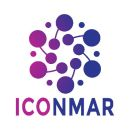Speaker
Description
Gold nanomaterials (GNs) of different shapes (nanospheres, nanorods, nano stars) and sizes exhibit properties. The surface plasmon resonance of GNs can be tuned by changing their shape and size, which affects the binding efficiency of target antigen and antibody interaction. The shape of GNs can also affect the orientation of attached antibodies and antigens, leading to improved specificity in sensing platforms. This study has investigated the morphological and optical properties of GNs, evaluated the impact of different sizes and shapes on ELISA surfaces, and optimized the conditions to enhance the sensitivity. The morphology and optical properties of GNs was studied using a 3D nanoprofiler, UV-Visible spectrophotometer. Gold nanospheres (GNPs) with 10, 15 and 30 nm, nanorods with 500,700 and 980 nm, gold nanostars with 60 nm were employed. Smaller GNPs may have higher binding capacities due to their increased surface area to volume ratio. The height and roughness of anti-spike protein antibody morphology increased when 10 nm GNPs were added, demonstrating attachment between spike-antibody molecules and GNPs. The attained limit of detection (LOD) is 1 pM, where the limit of quantification (LOQ) is 10 pM. Gold nanospheres and nanostars behave better than nanorod and provided good LOD and LOQ.

